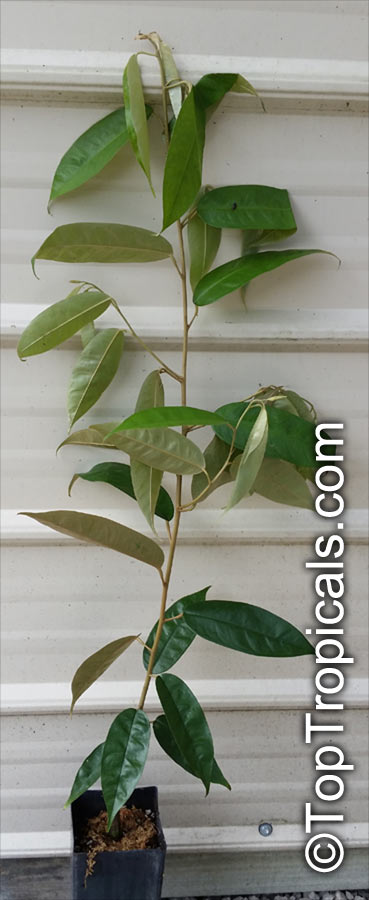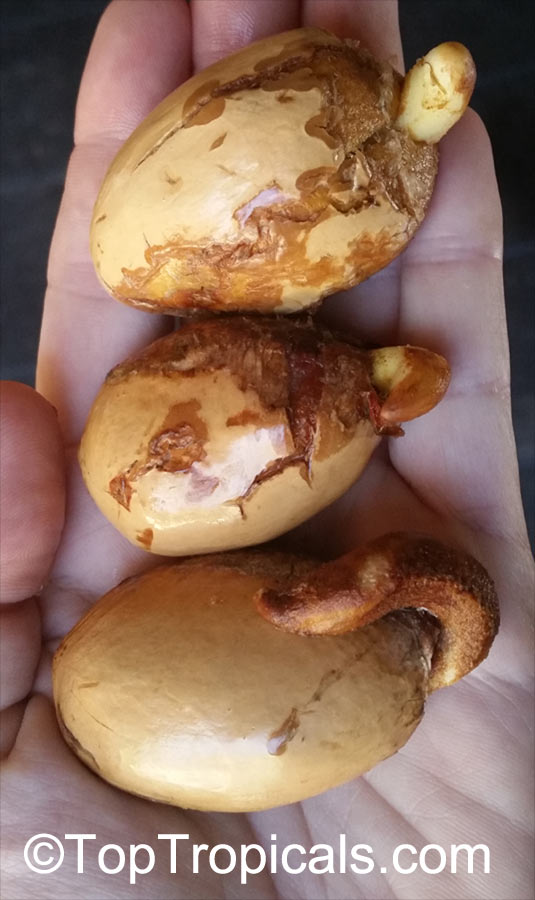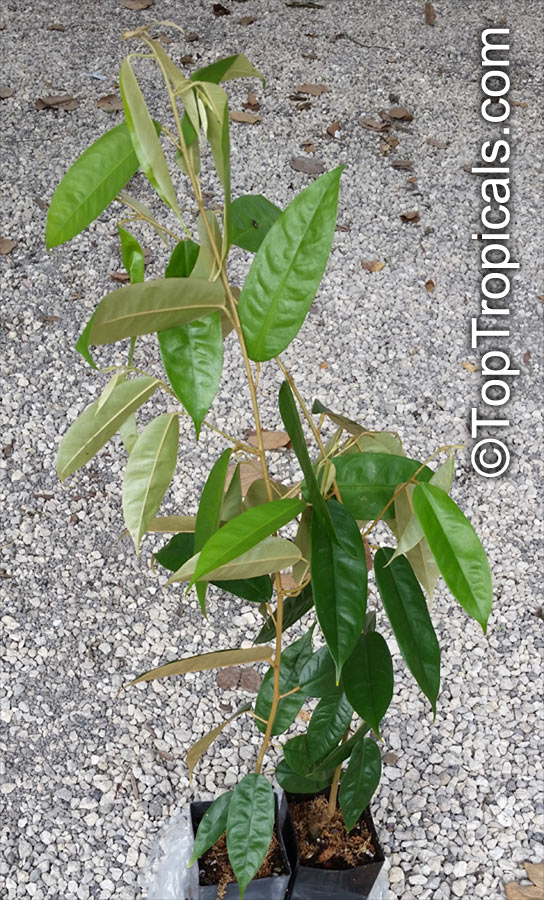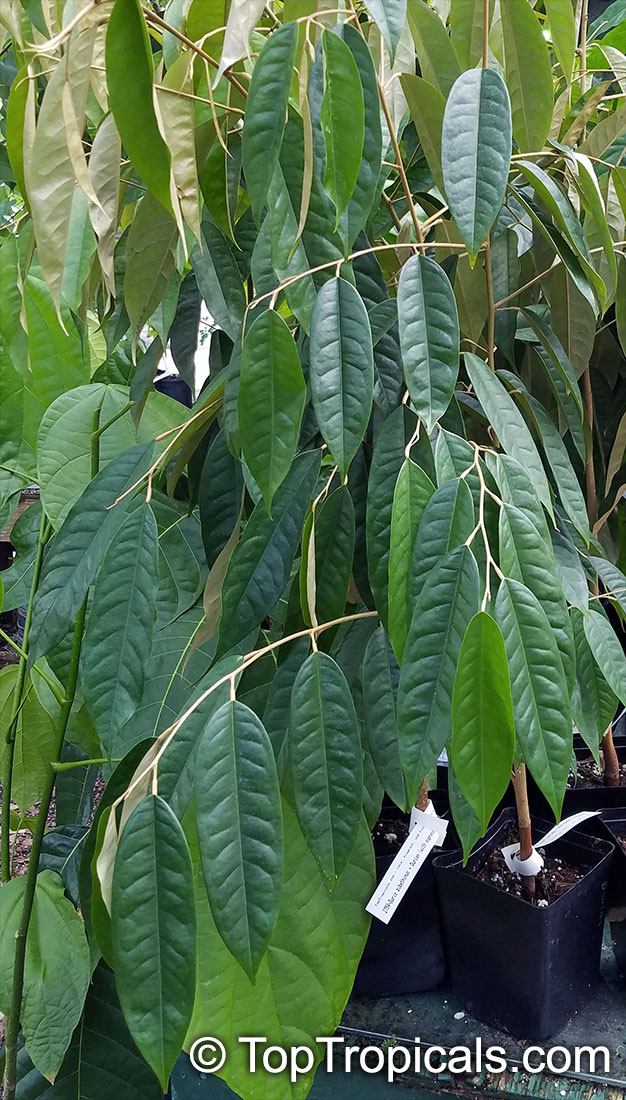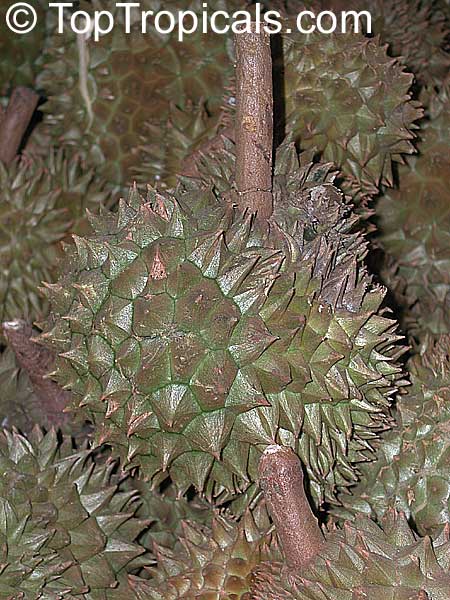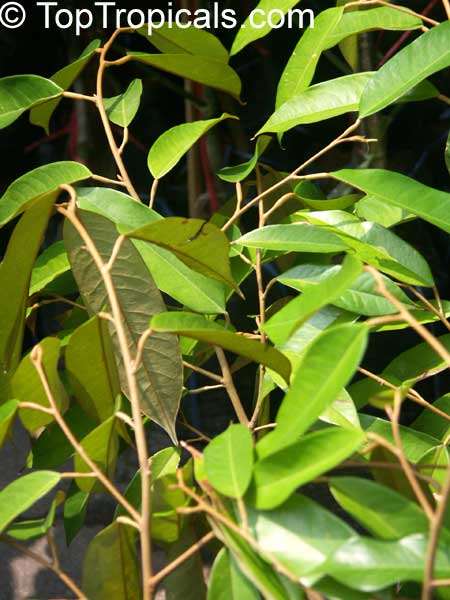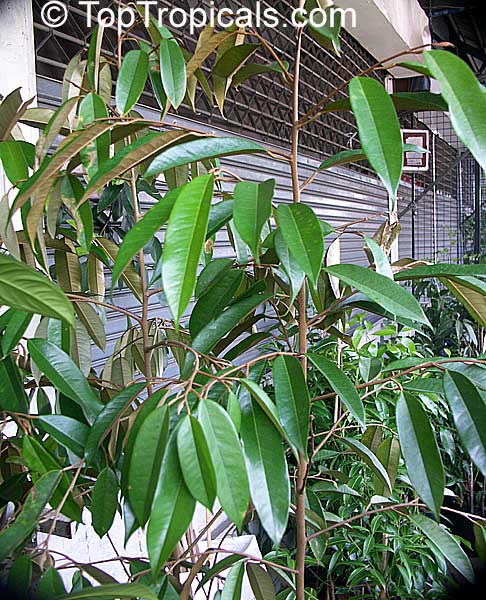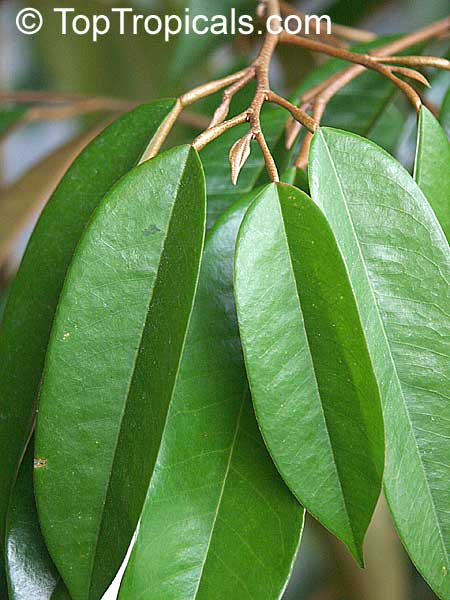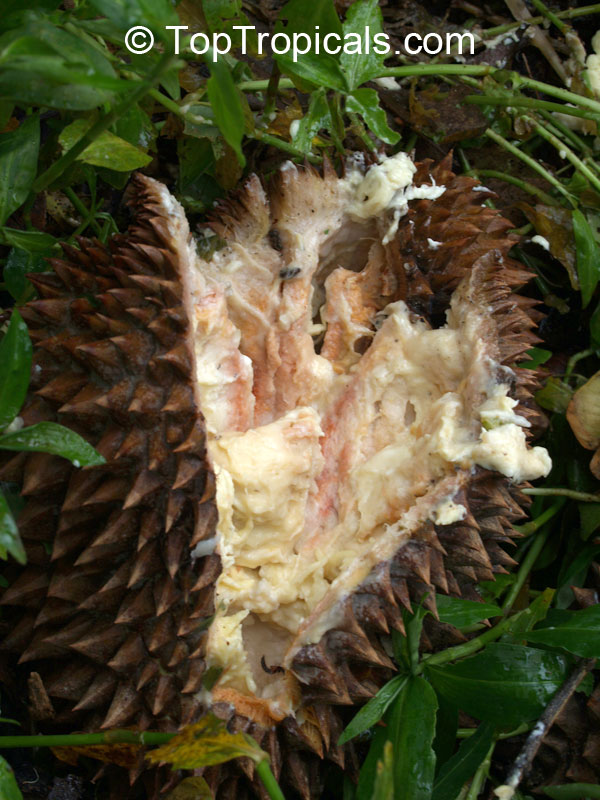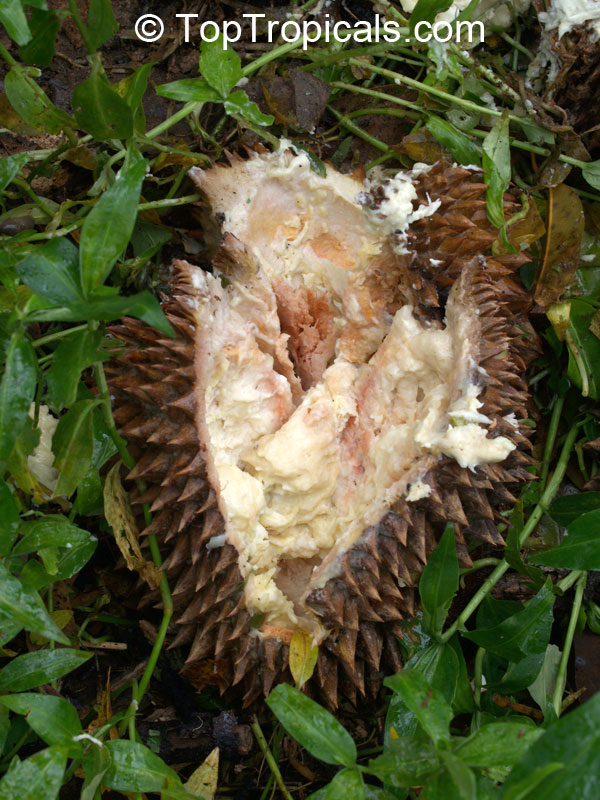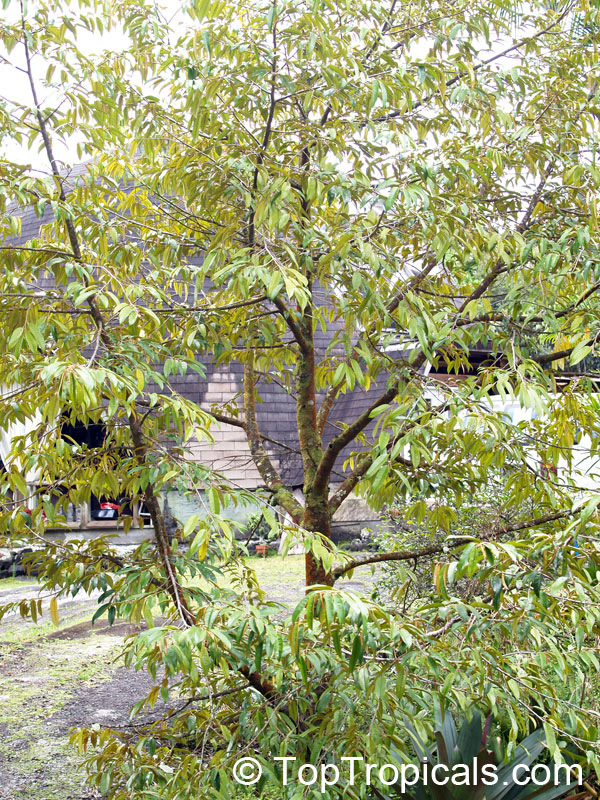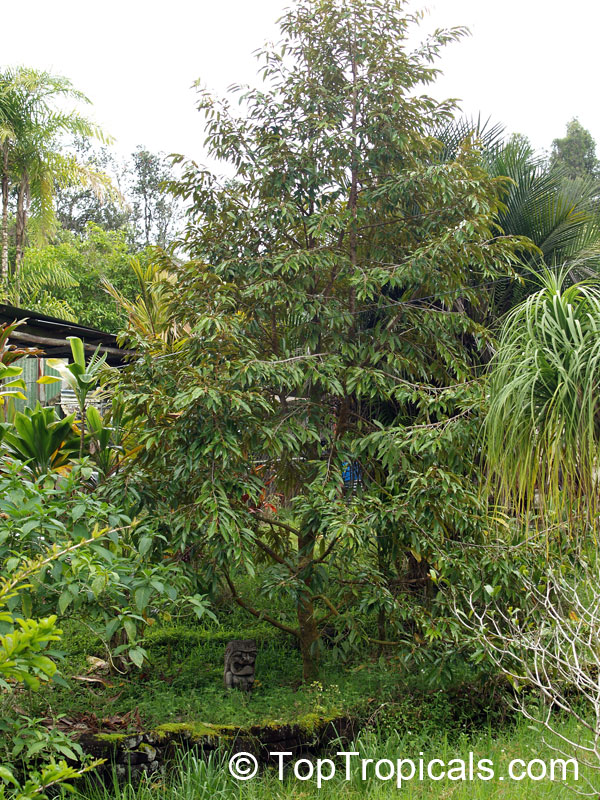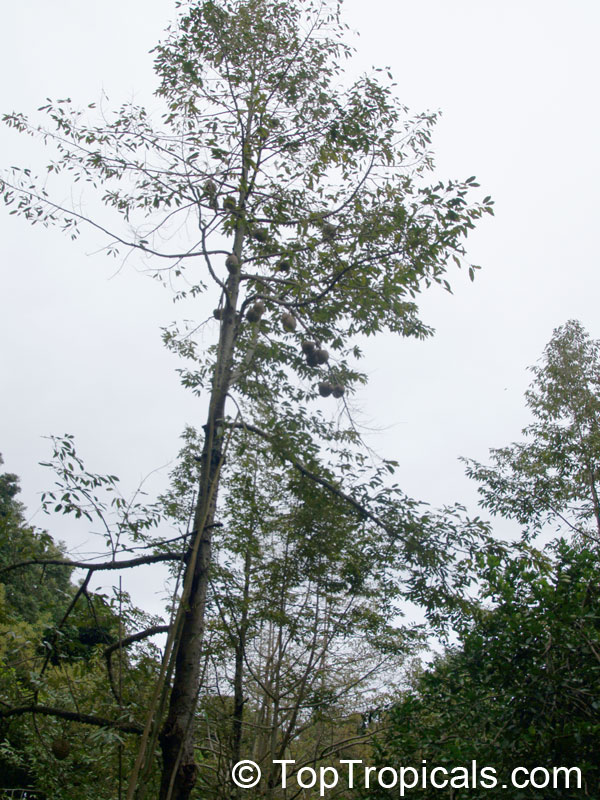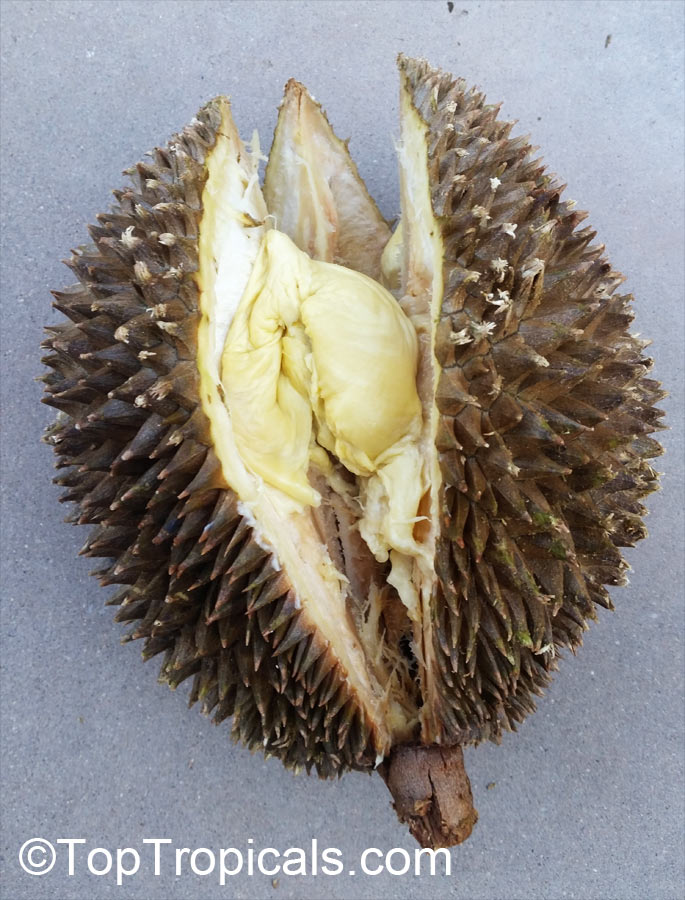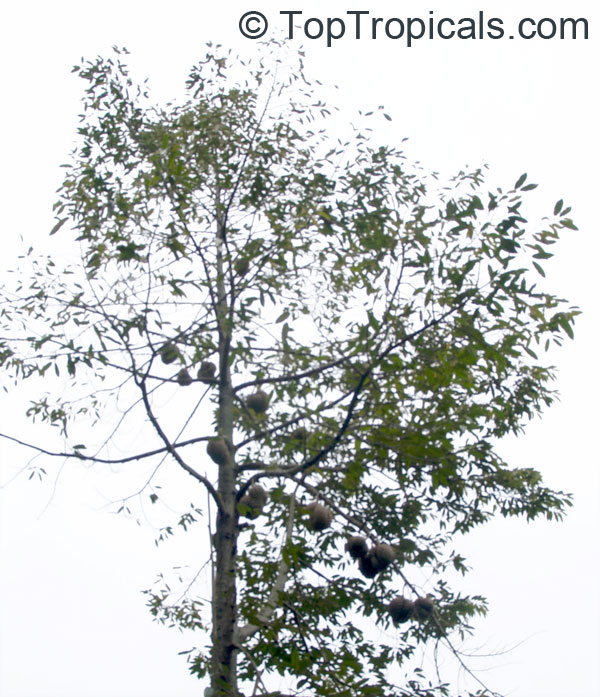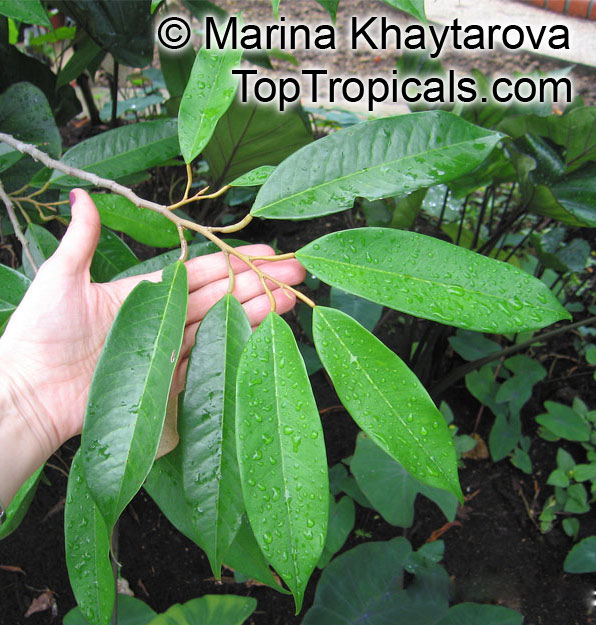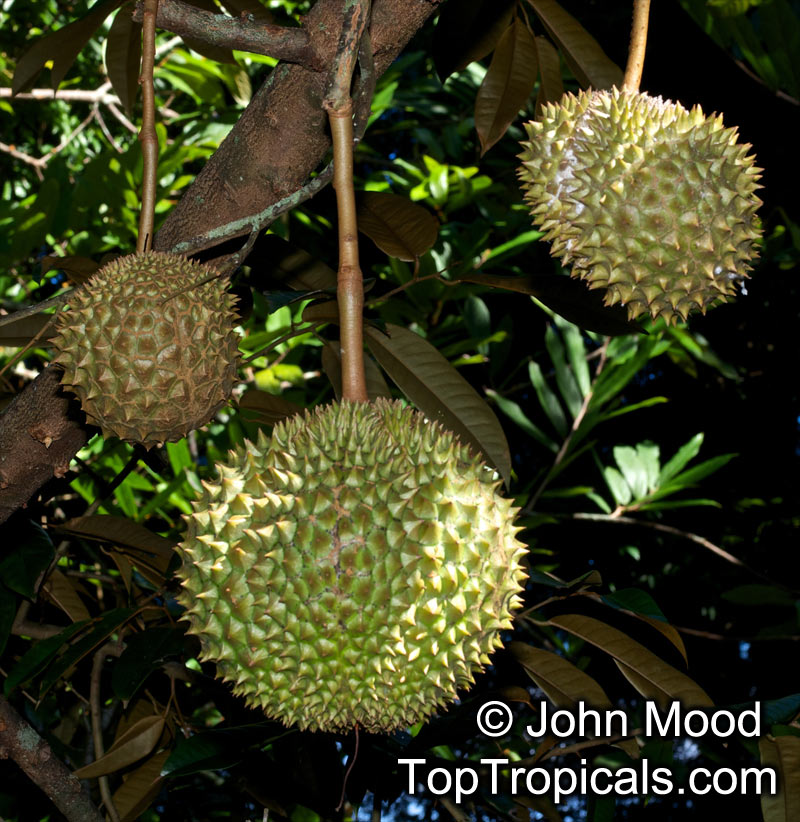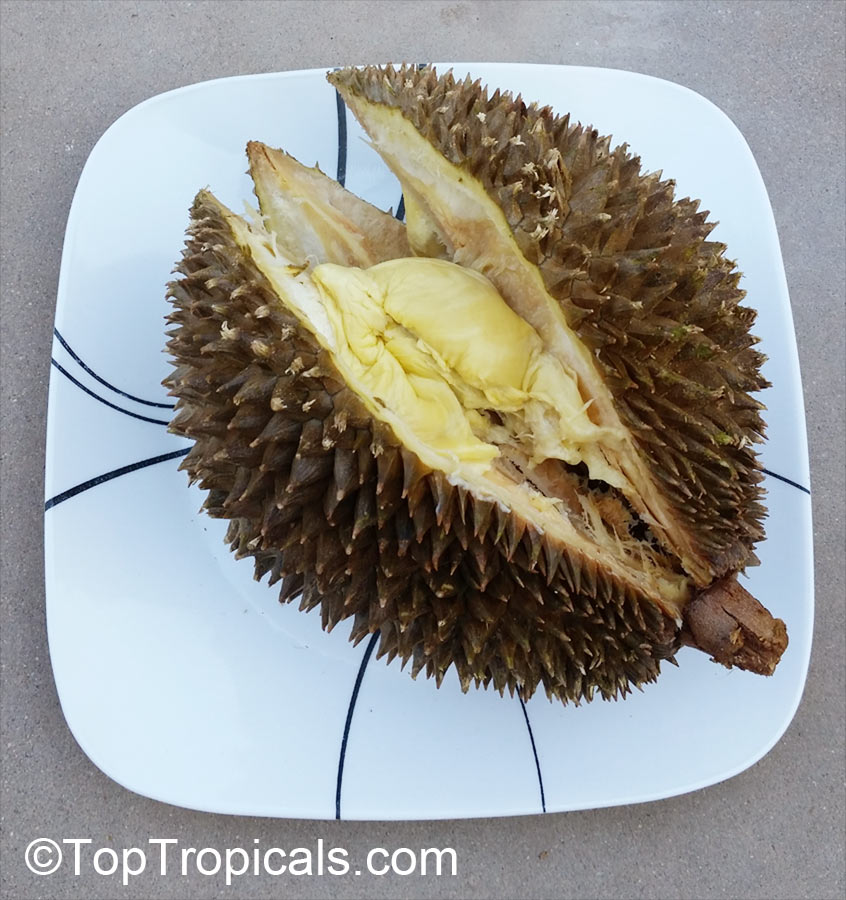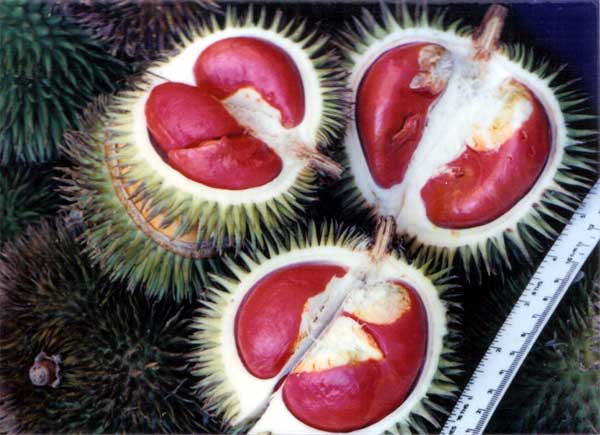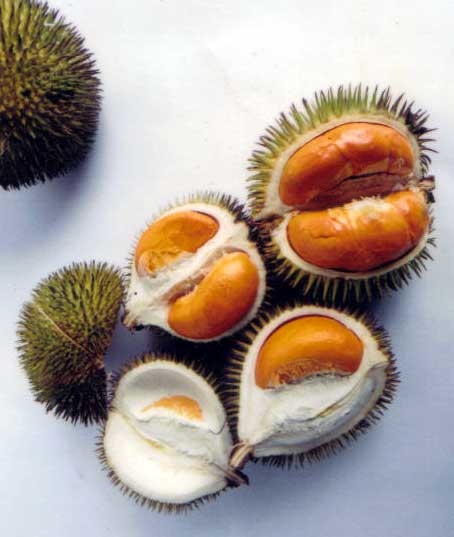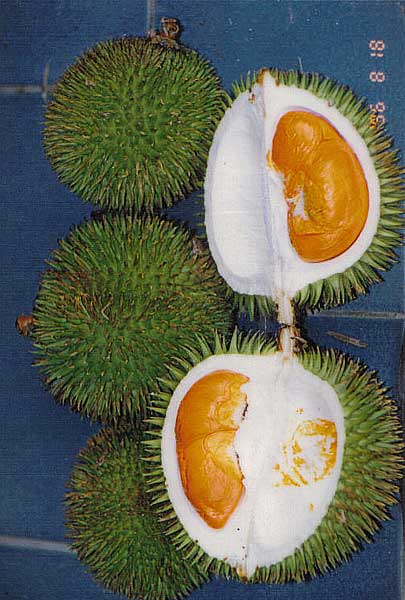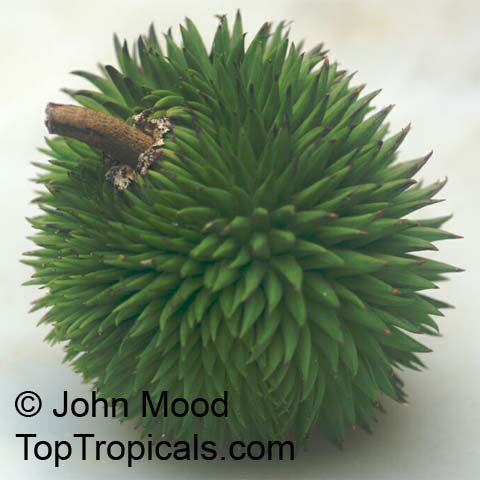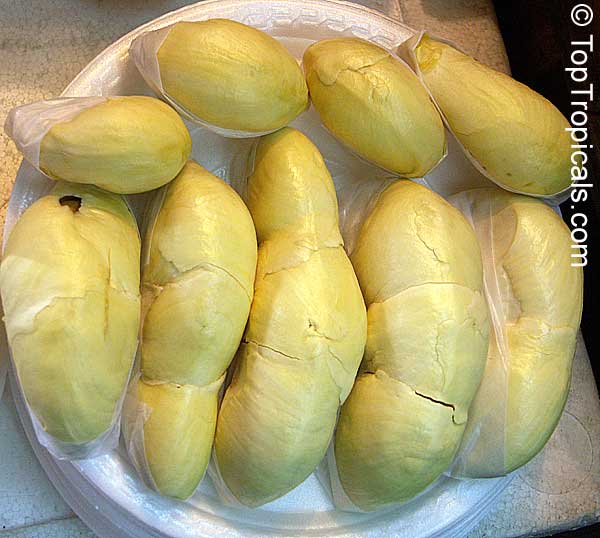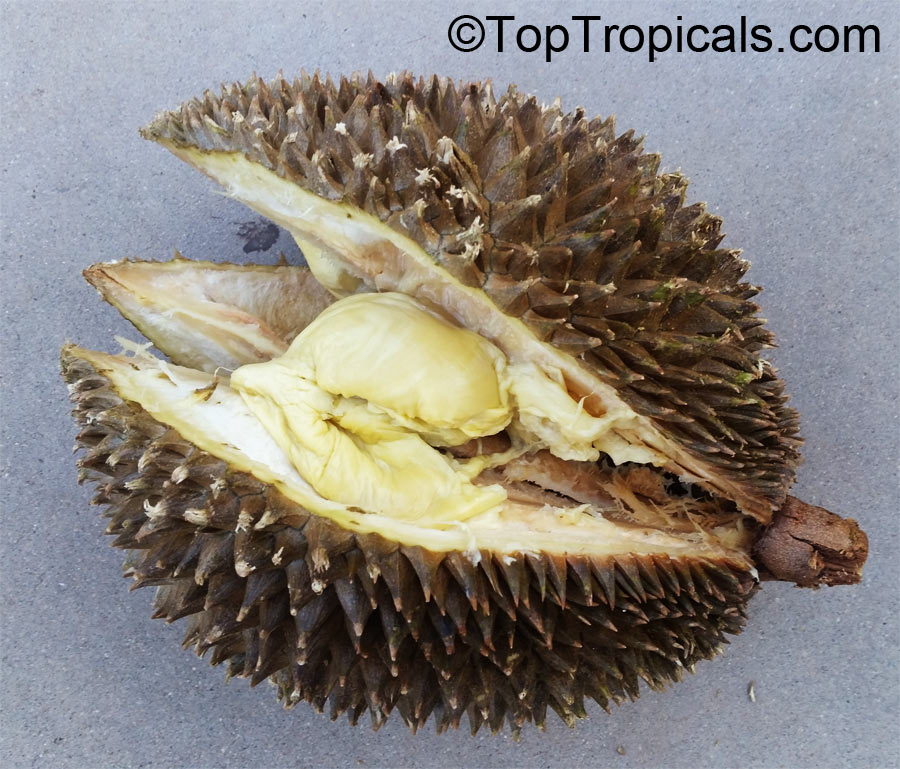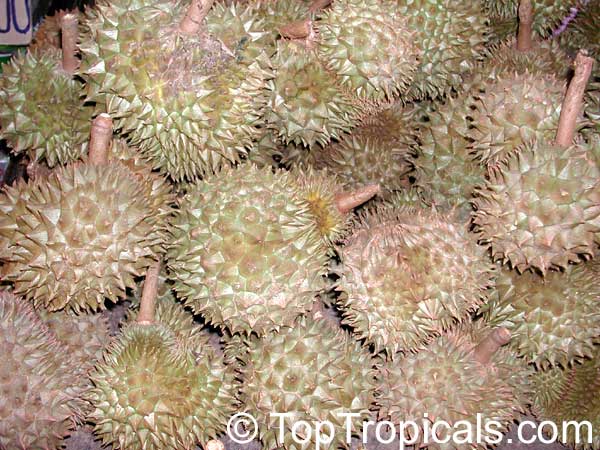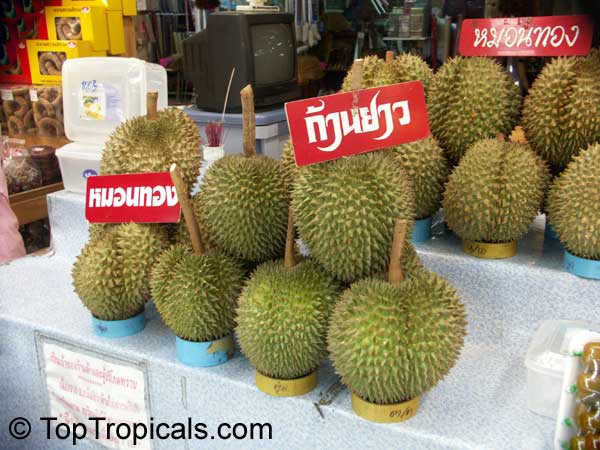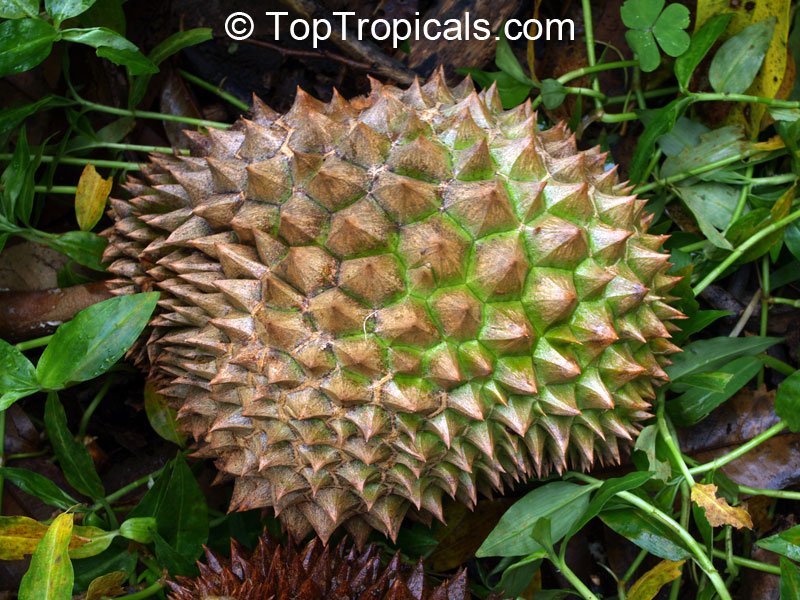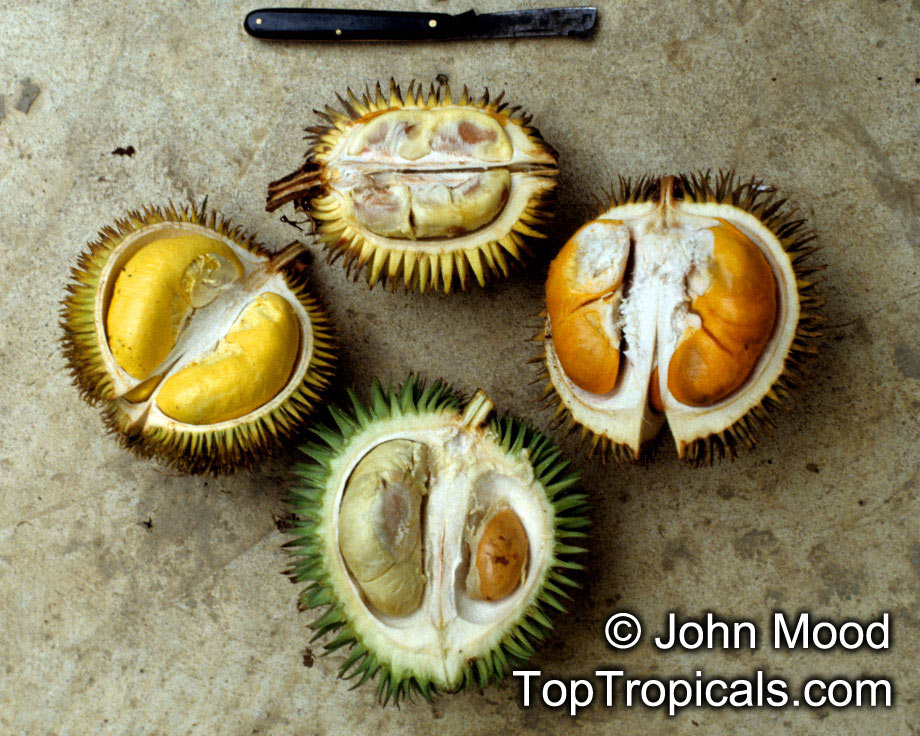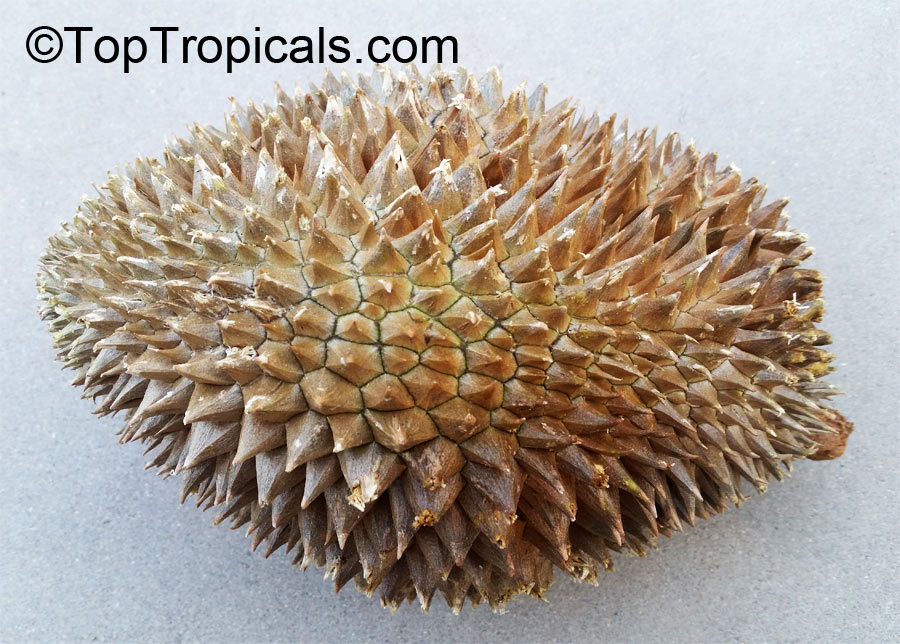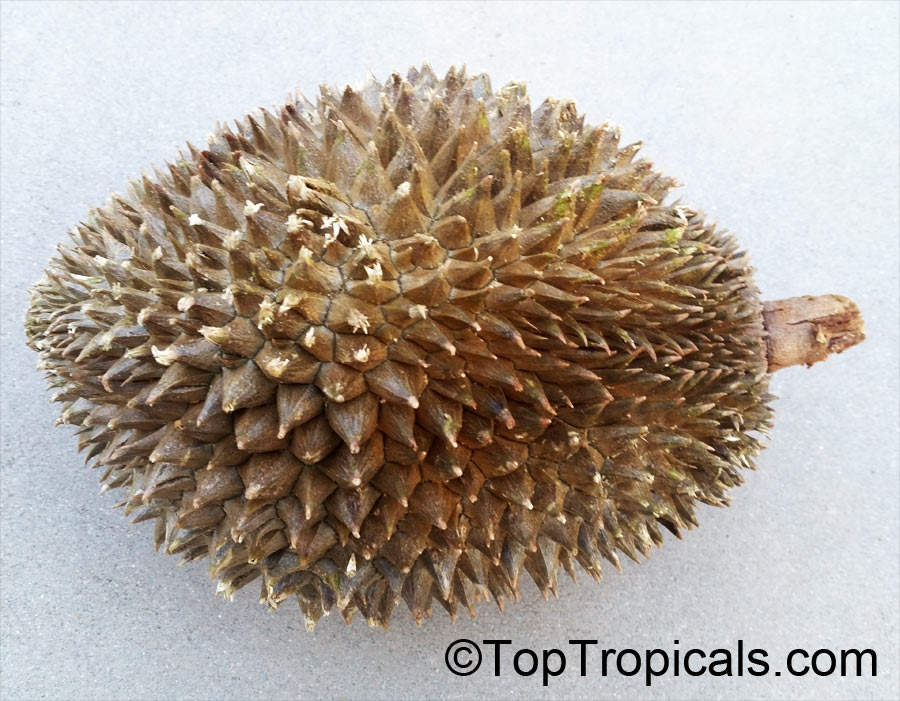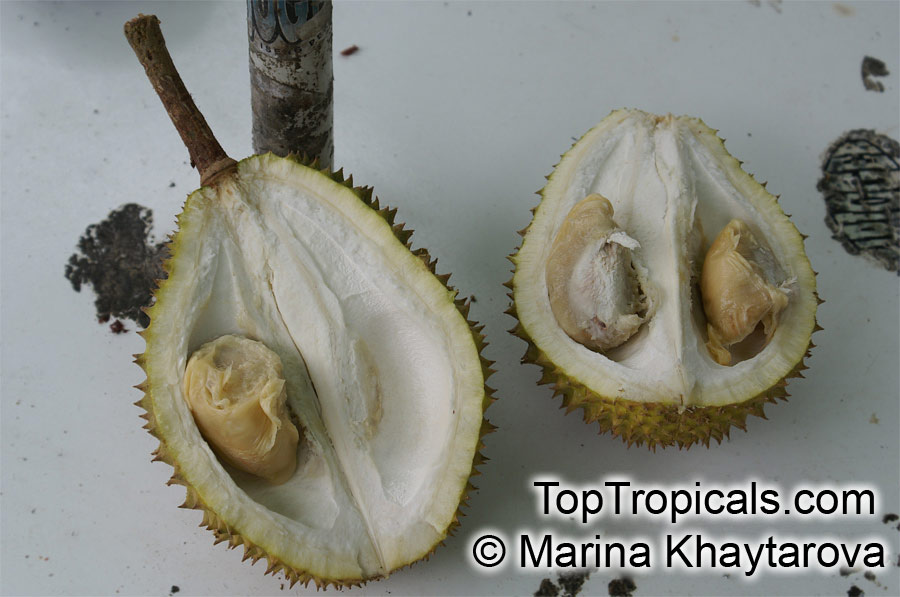Durio sp. (Durian)
Top Tropicals Plant Encyclopedia
Botanical name: Durio sp.
Common names: Durian, Durian Kuning, Durian Merah
Family: Malvaceae
Subfamily: Helicteroideae
Origin: South Asia








Large tree with pricky big fruit that is famous with its pleasant taste and unpleasant smell. Distinctive, highly pervasive aroma. To many Asians, the stink is a welcome odor for they regard durian as the king of fruits, a delicacy that is well worth the comparatively high price it commands. Some people are deterred by the potent smell and never actually sample the creamy golden flesh hidden within the spiny exterior - thereby missing one of the truly great pleasures of fruit eating. The more you eat of it the less you feel inclined to stop, wrote Alfred Russell Wallace, after eating his first durian on Borneo in the 19th century, and most of those who follow his example are likely to agree with him. Other edible durian species are sometimes available in the local markets of Southeast Asia. The scientific name of other species are Durio kutejensis, Durio oxlevanus, Durio graveolens, and Durio dulcis. There are many clones of the durian, all having a name starting with "D" and a number. For example, some popular clones are D24, D99, D158 and D159 (this is the "Mon Thong" variety). The red and yellow-fleshed fruits are Durio graveolans, more tolerant of S. Florida conditions and taste like peanut butter.
